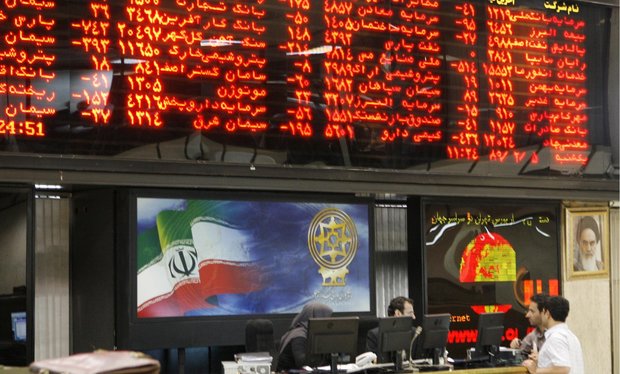This market has experienced a 250-percent growth of index over the past three years and its value has reached 12.282 quadrillion rials (about $285.714 billion) at the end of the third Iranian calendar month of Khordad (June 21), which equals 40 percent of Iran’s GDP.
Some 630 large companies, active in 40 industries, with full transparency in performance are currently present at Tehran Stock Exchange (TSE) and Iran's over-the-counter (OTC) market known also as Iran Fara Bourse (IFB).
Increasing number of the companies, rising capital, and diversity of securities all indicate that this market is working well toward more capital funding, but it is unfortunate that despite all these promising factors, stock market’s share is still low in this due.
One reason is that investors have their eyes more on the banks rather than the stock market for securing their required fund; it seems somehow logical as the banking system has a longer history in Iran compared to the stock market.
The other reason is the people’s low knowledge and familiarity with the stock market. They prefer to deposit their money in the banks rather than making investment at the stock market.
Profit earned through stock market has been recently higher that the interest that banks offer and higher than the inflation rate, but people do not know that.
It is while boosting people’s knowledge about stock market will lead to encourage them to make investment in this market, something that will be resulted in more production and higher employment.
Leading liquidity toward stock market seems more vital given the strong will for promotion of domestic production to achieve more self-reliance and combat the sanctions.
Current Iranian calendar year (began on March 21) has been named as the year of “Pickup in Production” by Supreme Leader Ayatollah Seyed Ali Khamenei and “Flourishing Production” is a plan seriously followed up by the government and private sector in this year.
“Flourishing Production” defines a heavy duty for all state-run and private bodies of the country, and stock market can play a key role to fulfill this duty given its significant performance which includes capital funding in a rapid, transparent and low-cost way for the enterprises, production units and industries.
As the inflation rate has been in a rising trend in the current year, production units will require more working capital; and it is the time that stock market can make a bridge to lead the liquidity toward production.
But the important point to be considered is that to materialize this objective the stock market and its performance should be clearly and vastly introduced not only to the people but also to the researchers and decision makers.
Flourishing production and promoting employment requires the stock market to absorb the liquidity to provide capital for production units and such thing is achievable when the people’s knowledge of this market is elevated and they learn well about shareholding and investment making in different stock markets.
MNA/TT























Your Comment